Justice System - Rooftop Soundcheck (1994)
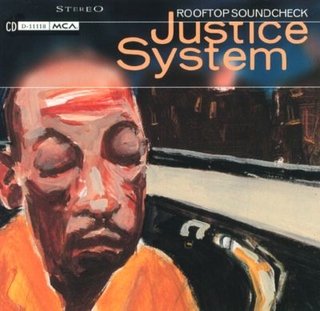
Sorry KVRX, but 1994 was the year of jazz rap. Nas’s Illmatic changed hip hop forever, while releases from Digable Planets, Common Sense, Pete Rock & C.L Smooth, Organized Konfusion, and Gang Starr made waves in their own right. Hiding just underneath the classics, however, are a few records in desperate need of more love. Enter Justice System’s Rooftop Soundcheck.
In an era of hip hop defined by unforgettable samples, Rooftop Soundcheck proves that the organic sound of a seasoned band can be just as effective. Whereas many of their contemporaries' work is shaded by the blue notes of cool jazz, Justice System’s sound embraces a warmer ethos that, put simply, funks. It’s not often that a New York group chooses to evoke the feeling of melting in the summer heat, but Rooftop Soundcheck is constantly raising the temperature with its sonic palette. On “Just Because,” Wizard C-Roc’s guitar sounds drowsy and acid-drenched, and its interaction with the wah wah effect on Coz Boogie’s Rhodes piano is almost provocative. The slick soul of “Soulstyle” is a warm breeze by comparison, while some unexpected Latin flavor is brought into the fold on the instrumental cut, “Santana.”
Thematically, Rooftop Soundcheck does away with a lot of the gritty motifs that were common in New York’s hip hop scene at the time. Instead, MCs Jahbaz and Folex trade lines celebrating their musical influences, sensationalizing their artistry, or reveling in the languid pleasures of summertime in The Big Apple. Thirty-one years later, their unique blend of funk, jazz, hip hop, and everything in between is still a breath of fresh air.
Madlib - Shades of Blue: Madlib Invades the Blue Note (2003)
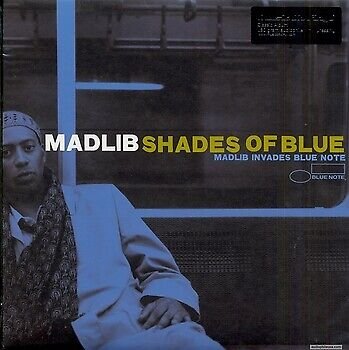
While Rooftop Soundcheck is a response to jazz rap conventions, Madlib’s Shades of Blue is a celebration – and everyone is invited. The mastermind behind some of this century’s most celebrated hip hop collaborations takes his experimental approach into the studio with the catalog of jazz's most influential label at his fingertips. The concept alone is enough to make hardcore fans of hip hop start foaming at the mouth.
Shades of Blue has all the ingredients of a quintessential turn-of-the-century jazz rap remix frenzy. The production is detailed and intimate, employing classic features like record scratches and turntable static to call attention to the concept. The drums have a thick boom-bap feel, with a series of saccharine soul samples providing the melody. From a distance, this record doesn’t seem all that unique. Upon closer examination, however, Madlib’s fingerprints are all over Shades of Blue. Unlike the easy-listening jazz sampling of fellow New York legends like Pete Rock, Madlib stays true to the sensibilities of the bebop classics he’s interpolating to create something a little more off-kilter. Often, his arrangements are busy and hard to follow, ducking and weaving through mazes of musical strata. As with the great works of Coltrane and Art Blakey, part of the gratification lies in the unpredictability.
In 2003, it was not easy to have a fresh take on jazz sampling in hip hop. After nearly 15 years of transformative producers pushing the genre to its limits, fans were ready to move on. Thankfully, innovators like Madlib and records like Shades of Blue continued to move the style forward.
The Blue Nile - Hats (1989)
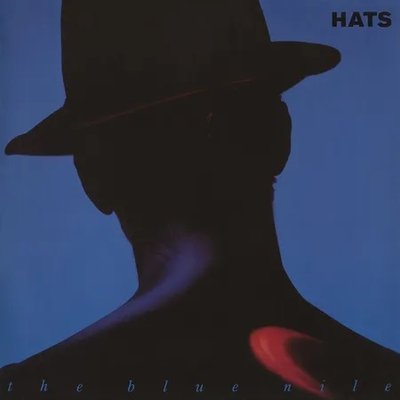
If the subtitle of this edition of The Playback hits a little too close to home, it’s time to check out The Blue Nile’s Hats. In slow-burning ballad after slow-burning ballad, the Glasgow band are able to turn just 38 minutes of runtime into something that feels vast beyond imagination.
Singer and songwriter Paul Buchanan paints lachrymose portraits with broad strokes, capturing in a few words the forlorn sentiments of a character utterly bored with the monotones of daily life in the city and beset by failed relationships. His delivery gives his words impact, as he combines passion and sensitivity to give a consistently moving performance. “From a Late Night Train” is the most heart-rending moment of all, couching the image of a mournful passenger in the austere and reflective depths of Paul Joseph Moore and Robert Belle’s somber synth melodies. Gloom doesn’t make it to every corner of the Hats, however; the shimmering crescendos and upbeat tone of “Saturday Night” provide a flicker of hope to close out the album.
For all of its cosmic sonic movements, Hats is still incredibly personal. For every synth that swells towards a distant galaxy, there is a lyric whose intimacy acts as a grounding force. Listening to the project front to back is like being right there beside someone who is feeling all of the frigid loneliness of traveling through space.
The Chameleons - Script of the Bridge (1983)
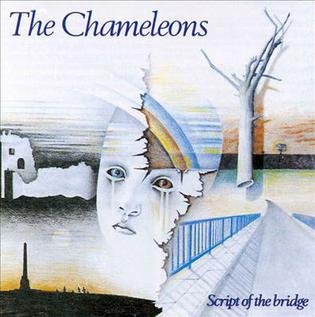
At a time when the leaders of England’s post-punk movement were making music with an unrelentingly dark aesthetic, The Chameleons shook up the Manchester scene by opting to set their nihilism against a hypnagogic backdrop instead. Whereas albums like The Cure’s Seventeen Seconds conjure images of haunted houses and ominous forests, listening to Script of the Bridge feels like making the final ascent into the spectral plane.
Script of the Bridge is not without its aggressive moments, though. The tense and driving guitar hooks that line the tracklist give the sound its edge, starting with the hostile tone-setter on the record’s dizzying opener, “Don’t Fall”. The feeling of disorientation at the heart of “Don’t Fall” is explored at length throughout Script of the Bridge. Through echoey vocal mixes, singer and songwriter Mark Burgess delivers cryptic messages about feeling out of place, outside of himself, and outside of reality. The imagery he employs is no less distorted – at various times, he is falling through the nebula, communicating with the spirit world, and watching his life flash before his eyes. These psychedelic vignettes are made far more potent by the project’s surreal sonic DNA, which features lots of icy synths and effects that give each song a sense of being numerously layered.
Up to this point, Script of the Bridge doesn’t sound very punk. Dreamy and angsty? Sure. That’s not exactly rare, as far as the popular music canon of the '80s is concerned. The Chameleons’ debut earns its punk stripes, however, by virtue of its discomfort. The youth of Manchester were not exactly pleased with the state of England at the time, and with Script of the Bridge, The Chameleons were able to bottle that anxiety and emphasize the confusion therein.
Marshall Crenshaw - Marshall Crenshaw (1982)
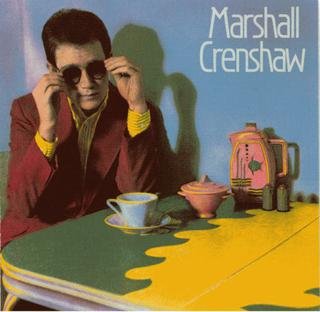
It’s a throwback in a throwback. As a New York City rocker in the early ‘80s, Marshall Crenshaw was surrounded by artists who prioritized experimentation and avant-garde techniques. On Marshall Crenshaw, he breaks that trend, embracing the simple songwriting approach that makes pop rock from the early ‘60s so endearing.
On this snappy debut, Crenshaw and his three-piece band swing, solo, and shuffle their way to 12 tracks of vintage rock-and-roll bliss. Crenshaw’s hooks are instantly memorable, and he’s got the boyish and nasally delivery that Buddy Holly impersonators around the world dream of. Pretentious listeners might be turned off by the straightforward ideas he puts forth on the lyrical front, but the crystalline clarity in his songwriting is a welcome respite from the cryptic musings of his peers. That said, Marshall Crenshaw is not a one-note experience. “The Usual Thing” is bursting with rockabilly flavor, while the triplet flow of the rhythm on “There She Goes Again” sounds clean and contemporary.
Marshall Crenshaw has a sonic makeup that largely reads as an homage to acts that came two decades before its release, but it still manages to look and feel distinctive of the early ‘80s. Its bright and bold aesthetic are dead-ringers, while its zany attitude fits it right in with the herky-jerky punk bands of the time. It sounds like the ‘60s, feels like the ‘80s, and breakup songs abound – there’s something old, something new, something borrowed, and something blue.